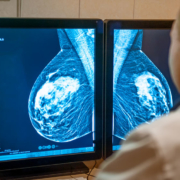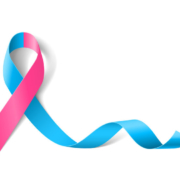17 February 2014
Spoiler alert – this will hardly be the last word on the screening mammography debate…
Last week, the British Medical Journal published a Canadian Study which concluded that mammograms are not effective in reducing breast cancer deaths. The study involved 90,000 women. However, there are some major flaws in the study, and “rapid response” letters to the editor were published within hours of the study release. So while the headlines scream “mammograms are not helpful”, the study is in question and it may not be possible to draw this conclusion.
While previous randomized trials have shown a reduction in breast cancer mortality due to screening mammography, there is no doubt that mammography is far from perfect. We have to screen a large number of women to diagnose one with breast cancer. In doing so, a percentage of women will require additional imaging and/or will undergo a needle biopsy for a benign finding. Mammography is not as helpful in younger women and in those with dense breast tissue. In addition, as technology has improved to allow us to see through the breast with more detail, we are diagnosing cancer (and precancerous conditions) that may never become a threat to a woman’s life. We are trying to find the balance between early detection which often (but not always) leads to improved survival, versus over diagnosis and over treatment.
Part of the problem is our technology. The results of screening mammography are highly variable depending on the patient’s age, breast density, weight, use of hormone therapy, and other factors. We have a one-size-fits-all test, which as every one knows, is really one-size-fits-none. We are also limited in who we screen. Women younger than 40 without a family history of breast cancer have no routine screening recommendations, and mammography is not very helpful in this age group. Many will use this as an argument for the use of ultrasound or MRI examinations. While these modalities may be extremely helpful in a given patient, they have not been proven to be effective in reducing mortality from breast cancer when applied to a general screening population.
It is important to realize that we have an imperfect technology, and our application of that technology to the individual is also imperfect. More research is needed to determine who is actually at risk, and who will truly benefit from screening. In addition, screening needs to be more individualized – a mammogram is not the right screening tool for all. Dr. Peter Beitsch, Past-President of the American Society of Breast Surgeons, has said on many occasions that “female and 40 is no longer acceptable for screening mammography – we need to risk assess each woman individually and use appropriate breast imaging tailored to them.”
In addition to more individualized screening, research is needed into which cancers even need to be treated. Many breast cancers found on mammography may never become a threat to a woman’s life. However, a hallmark of cancer is cell mutation – the slow-growing cancer today may not behave that way in the future, so at this point we err on the side of over treatment, as we cannot reliably predict future biologic behavior. Dr. Robert Miller, a medical oncologist who the Senior Director, Quality and Guidelines and Medical Director, CancerLinQ, at the American Society of Clinical Oncology, stated that “we simply can’t tell if early breast cancer diagnosed by mammogram will be indolent or not. For the individual patient we can’t say it’s ‘over diagnosis’. ”
And that’s really the bottom line. For an individual patient, we do not always have the right answer – our science and technology are just not there yet. While this is frustrating for many patients as well as for physicians, it is exciting to be practicing in a time when we are making progress (albeit slow) towards more individualized screening and treatment recommendations.









Trackbacks & Pingbacks
[…] is not a new question, and I promise there will be many parts to this story. The latest: Breast Cancer Screening, […]
[…] mammography is an imperfect tool, it’s still the mostly readily available screening tool available and we are stuck with it […]
[…] Mammography is far from perfect, largely because it’s old technology and there are many variables such as a woman’s age […]
Comments are closed.